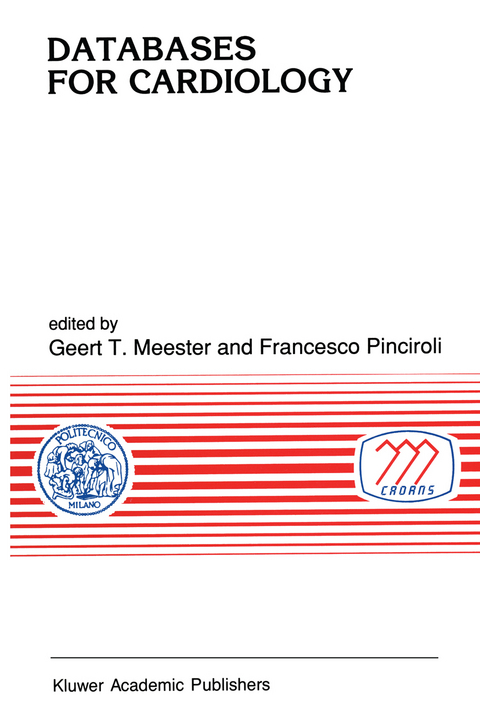
Databases for Cardiology
Springer (Verlag)
978-94-010-5653-3 (ISBN)
A database is in principle just a large collection of related or separate data, systematically stored in a computer. It should be possible for the data to be easily entered into the database-structure and afterwards also easily read, corrected and processed. The later analysis of data from such a database is greatly enhanced by the availability of special query languages and statistical analysis programs, not only for serial items but also for large combinations of data. Query languages, such as SQL (Structured Query Language) developed especially for these purposes, make databases easily accessible, also to researchers who may not be very well versed in computer programming. The cardiological/medical clinician and researcher of today is of necessity confronted more and more with computer-based data storage. Interest is of course focused primarily on the clinical use of such databases more than on the technical design itself, except for some very specific, personalized applications. For the latter approach, there are at present many software packages commercially available, especially designed for use in the personal computer environment. This book is comprised out of a number of contributions by various authors with differing backgrounds and from many different countries. The editors, being a cardiologist and an information scientist, have strived to achieve an equilibrium between these two fields. The chapters in this book form a cross-section of the many approaches to database design and implementation in the area of cardiology.
One: Basic approaches.- 1. Introduction to basic concepts on methods and techniques for Databases.- 2. Observational databases: a clinical perspective.- Two: Tools and services.- 1. Advanced instruments and methods for the development of databases applied to cardiology.- 2. A query language for medical statistical analysis.- 3. Enhancing relational database management systems by applying artificial intelligence techniques.- 4. Electronic information in cardiology: review of external databases and services.- 5. Computer-aided clinical problem solving as an educational paradigm for teaching preclinical cardiac pathophysiology.- 6. Continuing education of physicians and nurses in the DBMS area.- Three: Subject-oriented databases.- 1. The ARTEMIS data and knowledge base for hypertension.- 2. Databases for prevention, pacemaker and postoperative treatment: the charité experience in cardiology.- 3. Development of and experience with the coronary angiography and PTCA information systems at Leuven University.- 4. A database for the follow-up of heart transplant patients.- 5. The K.U. Leuven Coronary Surgery Data Base: a clinical research data base.- 6. Clinical results with computer support of the decisions (in the cardiosurgical intensive care unit).- 7. A pediatric cardiology diagnostic coding system and database.- 8. Databases and decision system for diagnosis of congenital heart disease.- 9. Practical PC-based data management in paediatric cardiology.- Four: Departmental applications.- 1. Patient documentation for the ultrasound laboratory.- 2. A research-oriented database management system for Holter data.- 3. A database management system of coronary care unit data.- 4. Information management for decision making by critical care physicians and nurses.- 5. Practical datamanagement in the Cardiology Department of a City Hospital.- 6. A PC-based implementation of a multi-service software for cardiology.- 7. An out-patient clinical data base management system.- 8. Databases for network systems.- 9. CADANS: the nervous system for cardiology.- Inde.
| Reihe/Serie | Developments in Cardiovascular Medicine ; 115 |
|---|---|
| Zusatzinfo | XVII, 425 p. |
| Verlagsort | Dordrecht |
| Sprache | englisch |
| Maße | 155 x 235 mm |
| Themenwelt | Informatik ► Software Entwicklung ► User Interfaces (HCI) |
| Mathematik / Informatik ► Mathematik ► Finanz- / Wirtschaftsmathematik | |
| Medizinische Fachgebiete ► Innere Medizin ► Kardiologie / Angiologie | |
| Medizin / Pharmazie ► Physiotherapie / Ergotherapie ► Orthopädie | |
| Technik ► Medizintechnik | |
| Wirtschaft ► Betriebswirtschaft / Management | |
| ISBN-10 | 94-010-5653-6 / 9401056536 |
| ISBN-13 | 978-94-010-5653-3 / 9789401056533 |
| Zustand | Neuware |
| Informationen gemäß Produktsicherheitsverordnung (GPSR) | |
| Haben Sie eine Frage zum Produkt? |
aus dem Bereich


